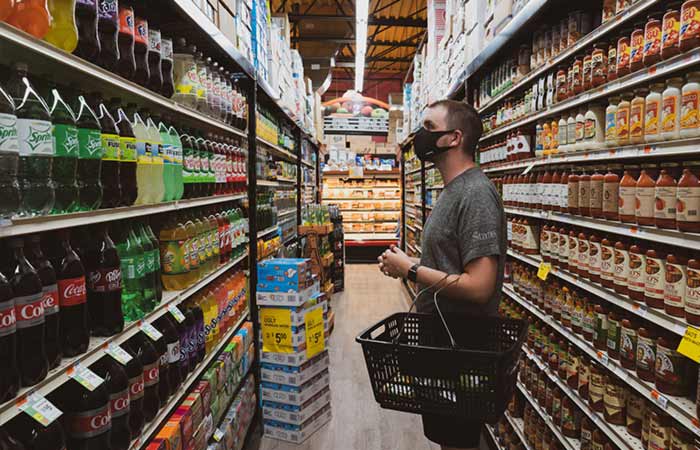In a fast-evolving world of ever-shifting consumer expectations and demands, research to provide evidence and intelligent insight to plan for the future is key to commercial advantage.
Smart businesses don’t just view research as a supporting role and a means of finding out more about their existing customers and target audiences; research is increasingly playing a fundamental and central role in developing and informing agile, effective strategies.
Here we outline four critical areas where research can really empower businesses to stay ahead of the competition.
Do you struggle to make sense of your research findings and processed data?
It goes without saying that intelligently designed research programmes are those that leverage and integrate multiple data streams. However, outputs, presentations and reports that focus solely on the answers to questions, and interesting facts are of no benefit. Research is worth nothing if it is not helping to accelerate business performance and drive measurable growth.
Key to valuable research are actionable insights, that ask challenging questions and provide clear and relevant direction to inform business strategy. Actionable insights that make an impact, and equip stakeholders with the knowledge, confidence and motivation to make the right decisions and drive change.
Having a research partner who is able to cleverly synthesise all of the evidence is one thing, but one who can think beyond the data and apply and communicate it in the right strategic context is absolutely crucial.
If your research partner takes the time to really understand your business, your market and the challenges you face, then actionable insights from research and data can totally transform your sales and marketing execution from an operational perspective.
The example below shows how actionable insight from a detailed programme of research and analysis helped a major London visitor attraction to more effectively shape future strategic online marketing decisions.
With businesses facing the external challenges of, for example, supply chains under pressure, the ever-evolving and fast-paced development of digital communications, and the impact of the pandemic, we’ve got to get better and more agile at using predictive insights to indicate where the market is heading and adapt accordingly.
It is all too easy to use consumer research to assess what has been happening, but its true value lies in being able to accurately evaluate consumer attitudinal and behavioural trends that will help inform the position and future direction of a brand and, on a practical level, how people are likely to behave.
Research is one of the most valuable predictive tools that we have in our armoury, and we need to be asking the right questions to forecast where the market is going, and how we need to be staying ahead of the game.
The travel industry is a prime example of a fast-changing landscape, where consumer behaviour and attitudes have been totally transformed over the last two years. Faced with the desire to travel and practical obstacles against it, people are expected to make more considered travel choices.
Recent research for one of our travel clients, as their holiday bookings start to take off again, focussed entirely on understanding this new context, and assessing likely future behaviour and attitudes to foreign holidays, post pandemic. Using a simple but effective programme of quantitative research and focus groups, we were able to confidently answer questions such as:
- How will COVID related travel conditions affect people’s desire to travel?
- How have any changes in personal financial circumstances affected likely types of holiday and destinations?
- What will people be looking for in a holiday, in terms of personal needs, safety and activities?
We were able to predict likely expectations and demand, and adapt and develop a proposition for the foreseeable future that prioritised a whole new set of features and experiences.
Combining research outputs with multiple data-streams is an extremely powerful tool.
Whilst we accept that data is now the engine that drives business growth and transformation, we may be missing a trick if we don’t explore further. Amassing piles of statistics can be unproductive and only provide half of the insight – showing us the ‘whats’, but not the ‘whys’. An integrated approach to data collection and analysis is essential to understanding the context surrounding consumer behaviour, which is why qualitative research, in particular, is key to completing the bigger picture, as it provides us with a really compelling consumer-centric perspective.
Whilst data will offer direction for a global strategy, research will then help to ground that strategy in a local, nuanced way. Furthermore, human stories help us to understand people; knowing what genuinely matters to them empowers brands to manifest their purpose with meaning, inform the shaping of a proposition and accurately and appropriately targeted messaging.
Example – development of a marketing campaign for a major UK alcoholic drinks brand
A similar map is shown for another spa town – Bath. Here the Out-of-Home locations are sourced from the PoI database and it shows again the prevalence of restaurants in areas dominated by workers rather than residents. The outskirts of Bath are more blue than red, reflecting the fact they are more residential in nature. Here the relatively few cafes & fast food outlets may face declining sales as those working from home return to the office.
Watching people in their own environment opens up opportunities to collect rich data, and to observe actual, rather than, claimed, behaviour.
However, the significance of observation, or ‘ethnography’, as a research method, is often overlooked and its value underestimated when designing a research programme.
Based on in-situ observation and interaction (e.g. in-store, on-premise or in-home), ethnography can uncover extremely valuable insight by helping to identify and analyse unexpected issues and surprises.
In a retail setting, ‘accompanied shops’ are a useful tool to gain an in-depth picture of a consumer’s shopping behaviour. By accompanying and observing the shopper as they make their way through the store and browse the fixture, we can get a true-to-life and in-depth view of the consumer’s shopping and consuming behaviours. We can observe how consumers make their choices at fixture, and what stands out, in terms of packaging, promotion, pricing and messaging.


In-home ethnographic research provides a wealth of opportunities to get close to the consumer and bring the research to life. Cupboard trawls and cooking sessions can all be videoed, and we can also employ mechanisms to include relatives and friends, and extensive multi-media pre-tasking.


A recent in-home ethnographic project conducted for a brand of tuna not yet launched in the UK, confirmed, to the horror of our client, that British consumers really do mix tuna with mayonnaise! This was a classic example of a local market nuance that our client was not expecting to see, yet it was key to informing messaging moving forward.
To conclude, intelligently designed research and analysis can provide so much more richness than many businesses realise.
A carefully and thoughtfully integrated programme of data-driven insights combined with consumer-centric research will not only deliver interesting outputs, but will provide actionable, credible and relevant solutions that will ensure business success.
GOT AN ACTIVE RESEARCH REQUIREMENT?
Get in touch today with our team of experts.

